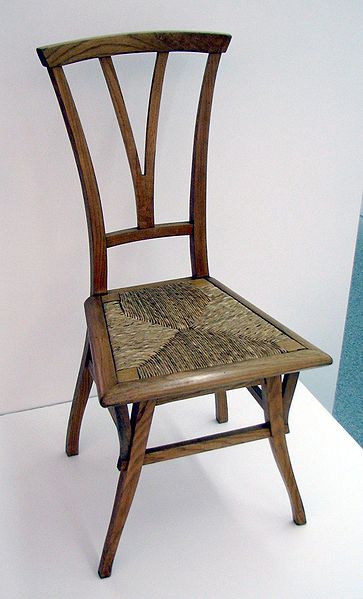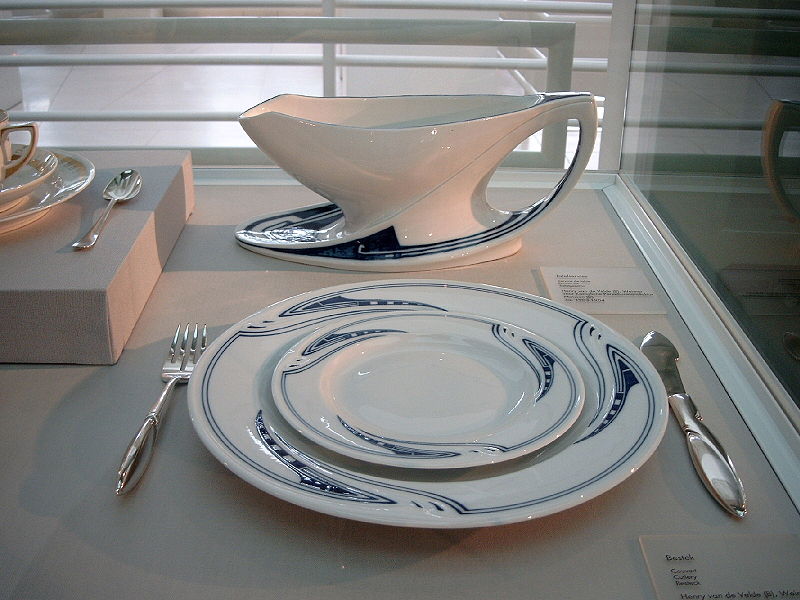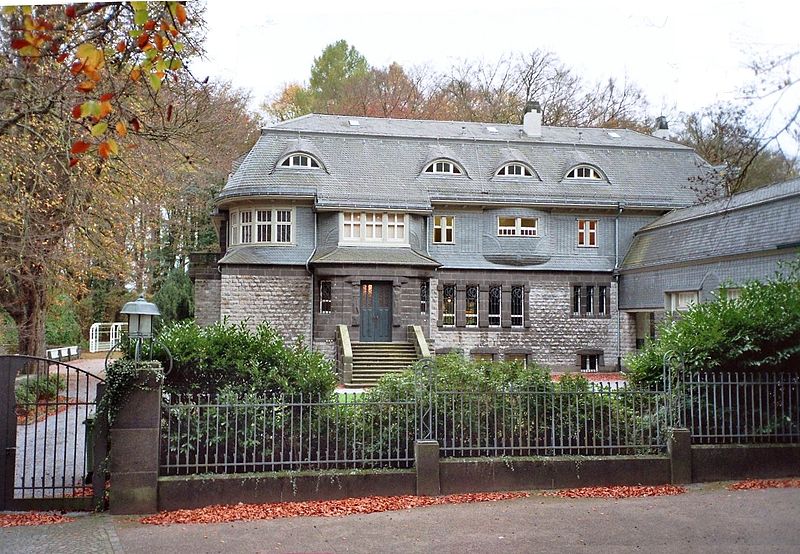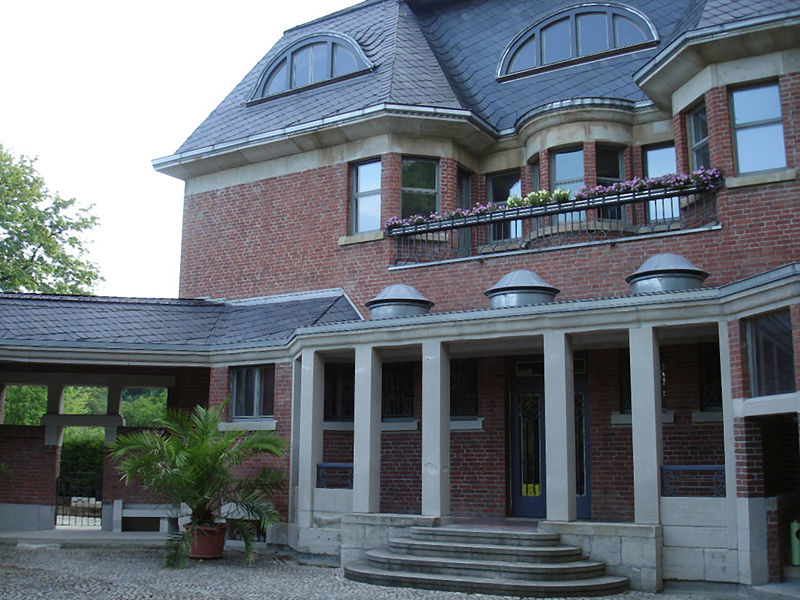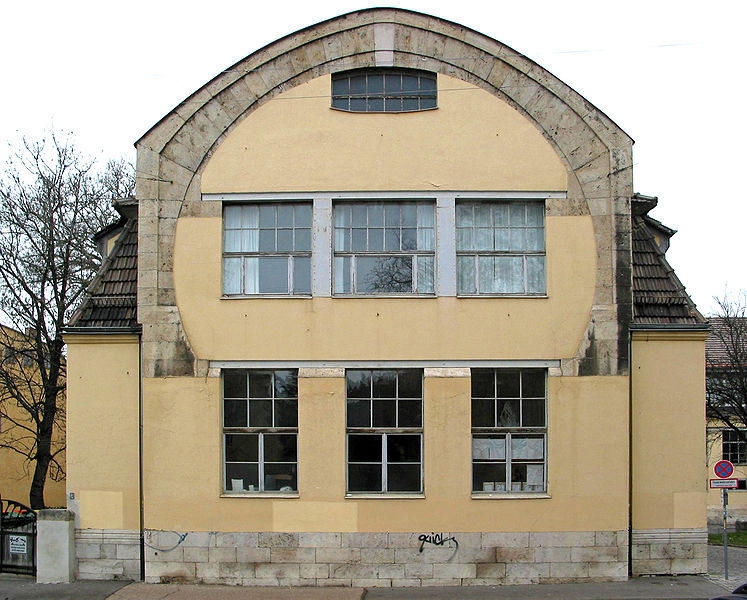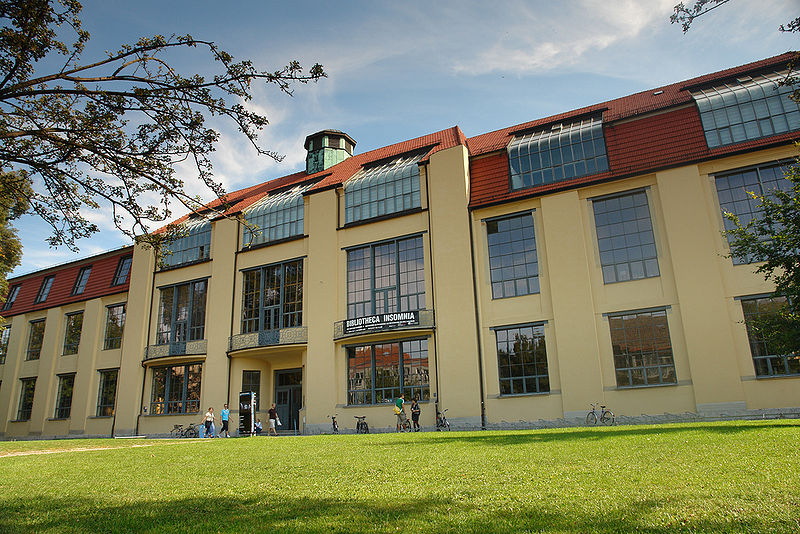<Back to Index>
- Physician and Member of the Hellenic Parliament Grigoris Lambrakis, 1912
- Architect and Designer Henry Clemens Van de Velde, 1863
- Chancellor of Germany Helmut Josef Michael Kohl, 1930
PAGE SPONSOR
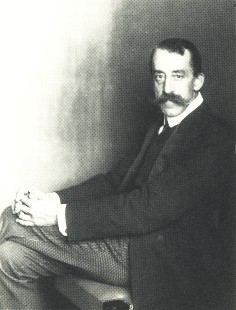
Henry Clemens Van de Velde (3 April 1863, Antwerp – 15 October 1957, Zürich) was a Belgian Flemish painter, architect and interior designer. Together with Victor Horta and Paul Hankar he could be considered one of the main founders and representatives of Art Nouveau in Belgium. Van de Velde spent the most important part of his career in Germany and had a decisive influence on German architecture and design at the beginning of the 20th century.
Van de Velde studied painting in Antwerp, under Charles Verlat and in Paris under Carolus - Duran. As a young painter he was thoroughly influenced by Paul Signac and Georges Seurat and soon adopted a neo-impressionist style. In 1889 he became a member of the Brussels based artist group "Les XX". After Vincent Van Gogh exhibited some work on the yearly exhibition of Les XX van de Velde became one of the first artists to be influenced by the Dutch painter. During this period he developed a lasting friendship with the painter Théo van Rysselberghe and the sculptor Constantin Meunier.
In 1892 he abandoned painting, devoting his time to arts of decoration and interior design. His own house, Bloemenwerf in Ukkel, was his first attempt at architecture, and was inspired by the British and American Arts and Crafts Movement. He also designed interiors and furniture for the influential art gallery "L'Art Nouveau" of Samuel Bing in Paris in 1895. This gave the movement its first designation as Art Nouveau.
Van de Velde's design work received good exposure in Germany, through periodicals like Innen - Dekoration, and subsequently he received commissions for interior designs in Berlin. Around the turn of the century, he also designed Villa Leuring in the Netherlands, and Villa Esche in Chemnitz, two works that show his Art Nouveau style in architecture. He also designed the interior of the Folkwang Museum in Hagen (today the building houses the Karl Ernst Osthaus - Museum). In 1905 he was called upon by the Grand Duke of Weimar to establish the Grand - Ducal School of Arts and Crafts in Weimar, the predecessor of the Bauhaus school which would replace the School of Arts and Crafts after World War I, under the new director Walter Gropius.
Although a Belgian, Van de Velde would play an important role in the German Werkbund, an association founded to help improve and promote German design by establishing close relations between industry and designers. He would oppose Hermann Muthesius at the Werkbund meeting of 1914 and their debate would mark the history of Modern Architecture. Van de Velde called for the upholding of the individuality of artists while Hermann Muthesius called for standardization as a key to development.
During World War I, Van de Velde left Weimar, and returned to his native Belgium. He was later instrumental in founding in Brussels in 1926 today's renowned architecture and visual arts school La Cambre, under the name of " Institut supérieur des Arts décoratifs". He continued his practice in architecture and design, which had demarcated itself significantly from the Art Nouveau phase, whose popularity was by 1910 in decline. During this period, he mentored the great Belgian architect, Victor Bourgeois.
During World War I, he lived in Switzerland and in the Netherlands where he designed the Kröller - Müller Museum in Otterlo. From 1926 to 1936, Van de Velde was professor at Ghent University, where he became the architect of the university library (the so-called Boekentoren or Book Towers).
